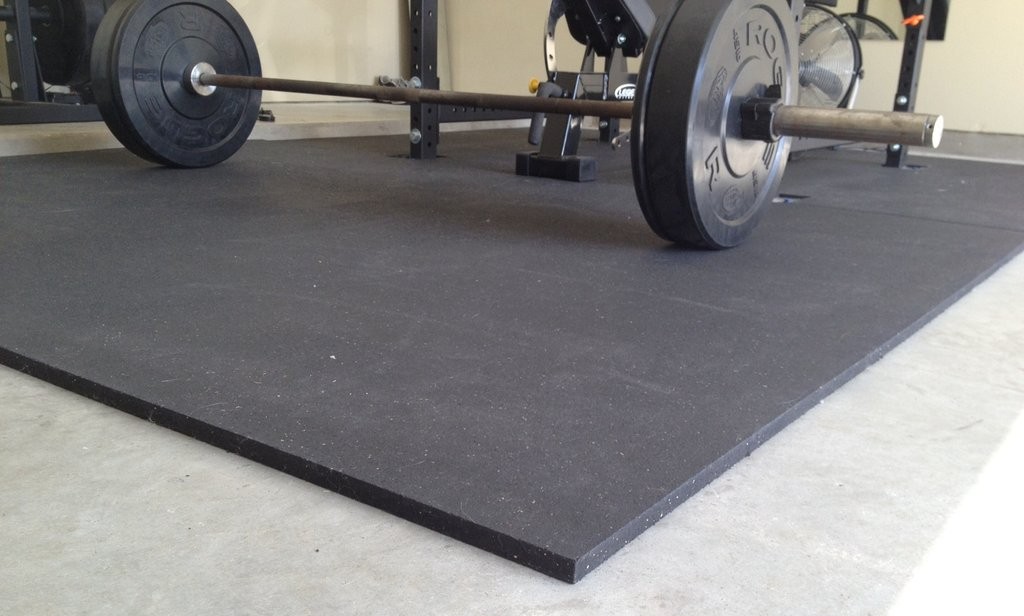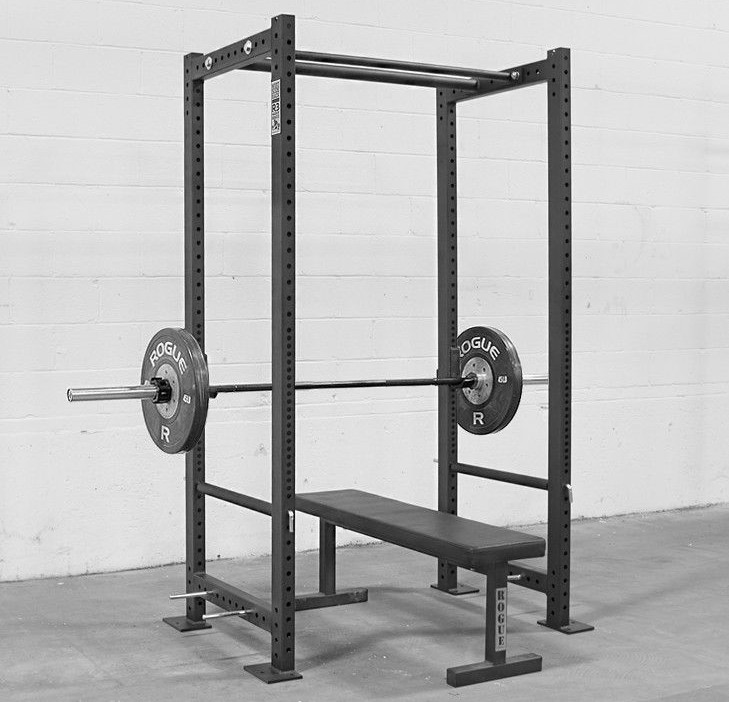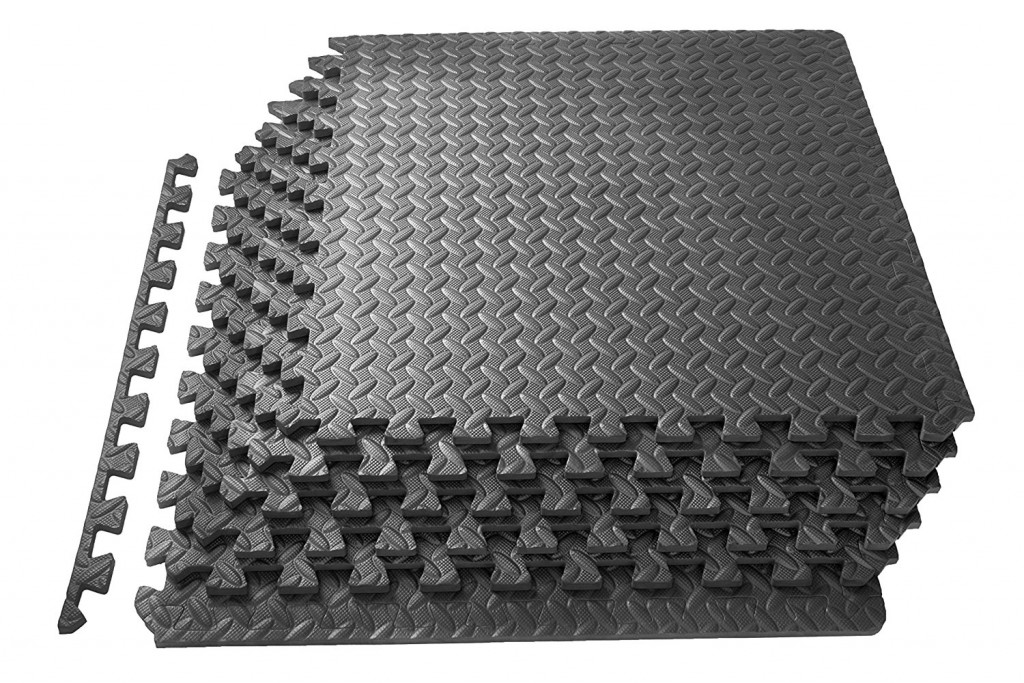It’s a good idea, at first. Putting together a home gym for yourself will save you on gym fees, driving time, dressing appropriately…
And yes, it’s a good idea, but don’t screw it up by getting the wrong equipment for your space and situation.
Here’s the biggest mistakes you could make.
Table of Contents
Buying a Bench Press Unit First
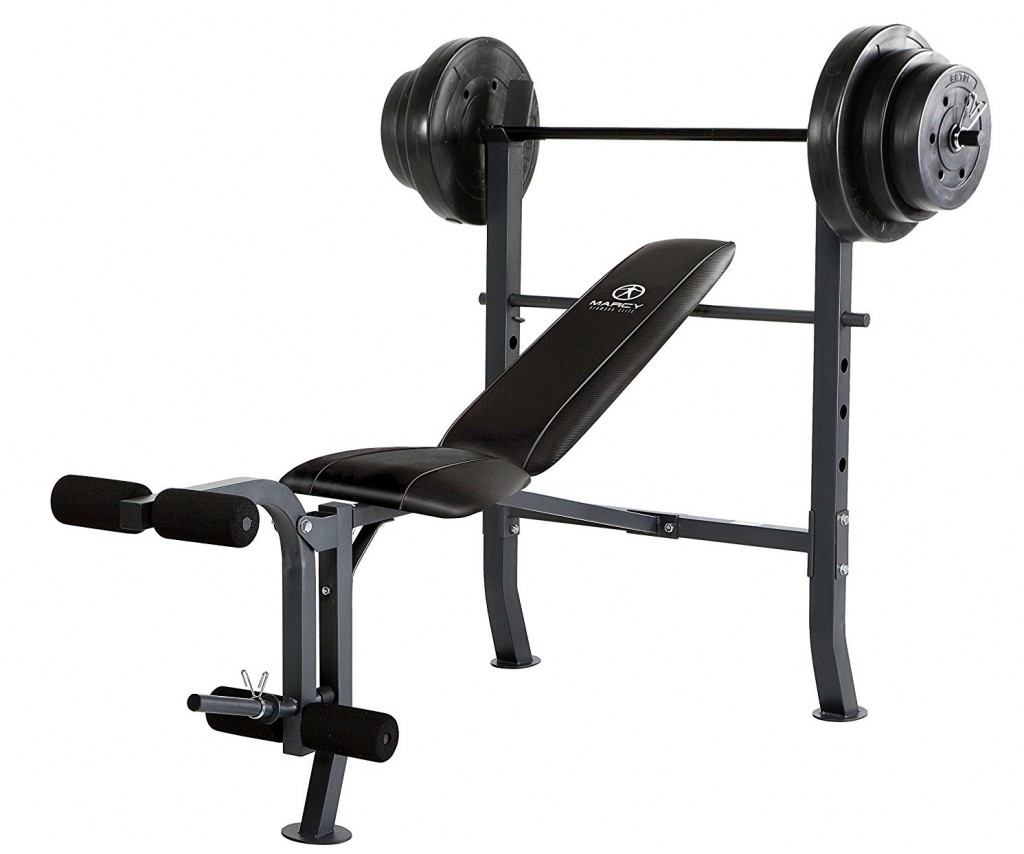
A weight bench like this is the typical bad purchase that beginners make when putting together their gym. They are always featured in the fitness department of sporting goods stores. The bench press is about the first lift that everyone learns and the most familiar.
It is true that the bench press is a top exercise in many respected lifting programs. But a cheap-ass bench like the above is not the way to go about it, and there are better options for doing bench presses that make efficient use of your limited space by giving you options for other exercises using the same equipment. A high quality bench press unit is something that competitive powerlifters would shop for for purposes of lifting on the same type of equipment used in a competition.
A better option for a home gym is a power rack and bench, as below.
That Rogue one is popular but not cheap. There are relatively cheap options for a decent rack and bench like this out there (you will spend at least $500 new, or you might score a great deal on the used market). It will not be anywhere as cheap as the single-purpose bench that has an attached rack.
A power rack has adjustable safety bars to catch the barbell if you fail a lift. These are set just below your range of motion for whatever exercise you’re doing.
Just as important, you can do several barbell exercises in a rack, including bench presses, squats, standing rows, deadlifts, overhead presses, as well as additional exercises with included or add-on features such as pull ups and dips. A power rack is the most efficient full-body station you could have in your home gym.
Buying a Cheap Bench with Squishy Padding
I really, really don’t like benches with soft padding like the Powerline benches. You simply can’t tell from the pictures, but soft padding is the worst thing about a cheap bench. Most benches are at least engineered for the frame to hold a good amount of weight, or they would risk lawsuits. The issue is the soft padding creates an unstable surface that makes it hard for you to feel secure when lifting a lot of weight, plus with enough weight it can even bottom-out on you and make your back dig into the plywood underneath.
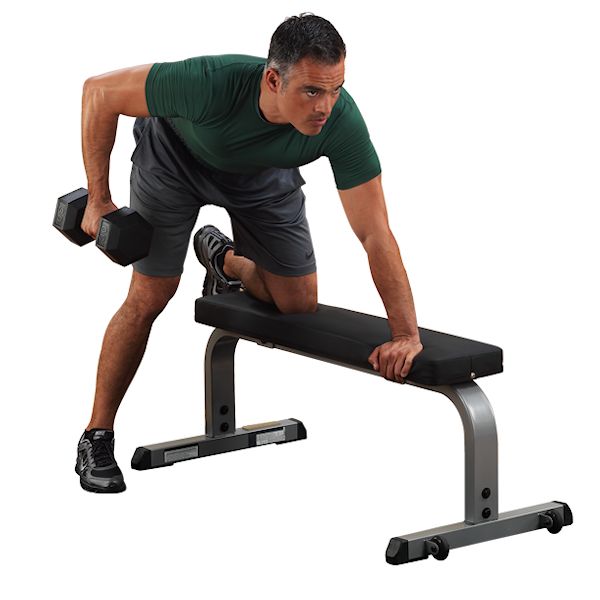
In the current market, if you buy a new flat bench over $150 or an adjustable flat/incline bench over $250, you should be getting pretty firm padding like you would experience at a commercial gym that has good equipment. I wrote an article on the top flat/incline benches you should look at.
Going Too Machine-Heavy
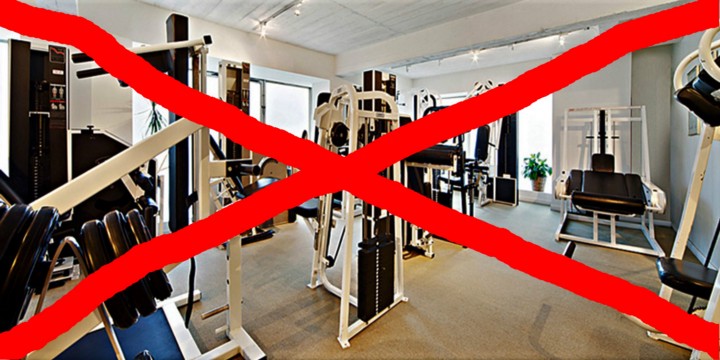
That sea of weight machines you see at your local globo-gym is a waste of money and space. It’s the result of clever marketing in the 1970s. It was the biggest scam in fitness. It continues to this day. Gyms keep buying that expensive crap to fill up the floor space.
The idea was that isolating each muscle with a specialized machine was the best way to work out. That was never backed up by anything.
Likewise, compact all-in-one machines like the Bowflex and higher-quality machines are still not the best solution.
At this point, it’s well-known that freeweight barbell exercises are more effective than machine exercises. The more natural range of motion in an unassisted barbell exercise, along with the stabilizing action of your muscles required to keep your balance, gives your body the right stimulation it needs to get stronger and more effective at performing heavier lifts for more repetitions and improving overall fitness.
Most machines should be relegated to assistance work or for specialized exercises that you feel you need and that barbells or dumbbells are not suited well enough for. For the large majority of work you should be doing, freeweights will serve you far better, along with some accessories such as a landmine, pull up bar, and other pieces of equipment that help you work out with more natural movements that involve multiple muscle groups.
Cardio equipment is one exception. You could reasonably get a good piece of cardio equipment that you will actually use before you should consider something like a lat machine, pec fly machine, or leg extension machine. See the section of this guide on cardio equipment for more details.
Getting Home-Grade Cardio Equipment
Don’t make the mistake of shopping online for the cheapest treadmill, elliptical or indoor bike that you can find. It will wobble, rattle, and generally just feel like crap. Nothing like you had remembered from the ones at your local gym. You’ll hate it so much you won’t use it.
You’re better off either not buying one at all, or blowing money on an expensive commercial model, or having some patience and waiting for a commercial model to pop up on the used market. Gyms go out of business all the time, and older but really solid pieces of cardio equipment float around. Just determine the exact model and look it up online to see if it’s commercial rated, usually indicated by a commercial warranty. Anything with a commercial warranty will be nice and solid feeling, meant to be pounded on all day in a commercial gym.
Rowers are currently popular, for good reason, and you can get a Concept2 Model D for under $1,000. Or get lucky and score a used model, even one 10 years old that will serve you nicely. I wrote a few tips on buying a second-hand Concept2.
Standard Plates – Don’t Do It!
In short, standard sized plates have 1″ center holes. They are the cheap kind that you might find in chain sporting goods stores, although some rubber coated types are also commonly used today for group cardio classes utilizing lightweight barbells.
Olympic plates are any plates with 2″ center holes.

In commercial gyms you’ll find only olympic plates and bars. There are many advantages to olympic bars, and the plates tend to be better too. I wrote a whole article on this: Standard vs olympic weights.
To make things confusing, a lot of the basic olympic plates have the lettering “STANDARD” on them. That doesn’t mean anything; it’s all about the hole size.
Under-Estimating the Floor Space You Need
A power rack is 4ft wide. Let’s say it’s also got plate storage pegs, so it’s 6ft wide.
Did you forget about the 7ft bar? It doesn’t matter how wide your rack is. The bar needs freedom to move around, with the plates on the ends. You need clear space on the sides.
So you need 7ft?
No! How are you going to load the bar with no space on either side?
Give yourself a minimum of 12″ of space on each side of the bar so you can at least kind of reach in there and load the plates. Better yet, to avoid straining your back you will want 2ft of space.
Now we’re talking an 11ft wide space for you to comfortably use and load a 7ft bar in a rack.
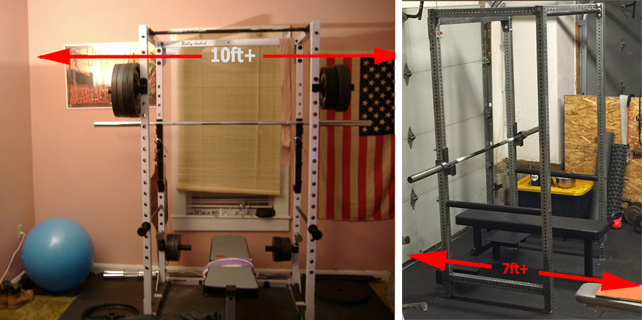
Similarly, while the rack may only be 4ft deep, you need at least 6ft of depth clear, which gives room for your legs and feet. 7ft is better for having enough space to slide the bench in and out of the rack and not have to awkwardly pick it up and gingerly bang it around at an angle to get it out.
With a weight machine you need enough room to perform roll range ofn e motioxercises and to move yourself around to get into position without awkwardly climbing around in the corner of your room.
Give your weight plate storage tree enough space on all sides for you to easily load plates with good body mechanics.
The video below applies especially to loading plates on your bar from awkward positions.
No lifting and twisting!!
Forgetting Ceiling Height
8ft ceilings are the standard for residential apartments. But you don’t have 8ft to work with. Did you forget to subtract the layers of plywood and rubber flooring?
So great, your rack can fit under the 8ft ceiling. Did you leave enough room for your head over the pull up bar?
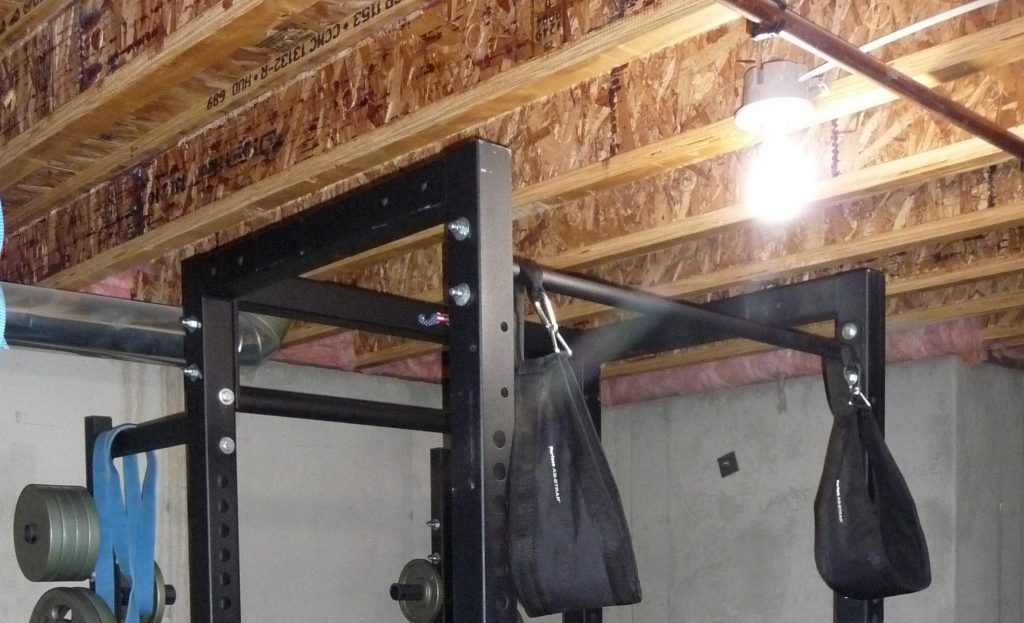
12″ of headroom should be enough. This means you may need one of the “short” models of power racks. That’s ok if you’re a short person, but if not, that short of a pull up bar is not going to be useful for you. Consider a good squat rack with safety bars but no pullup bar, like the Rogue SML-3.
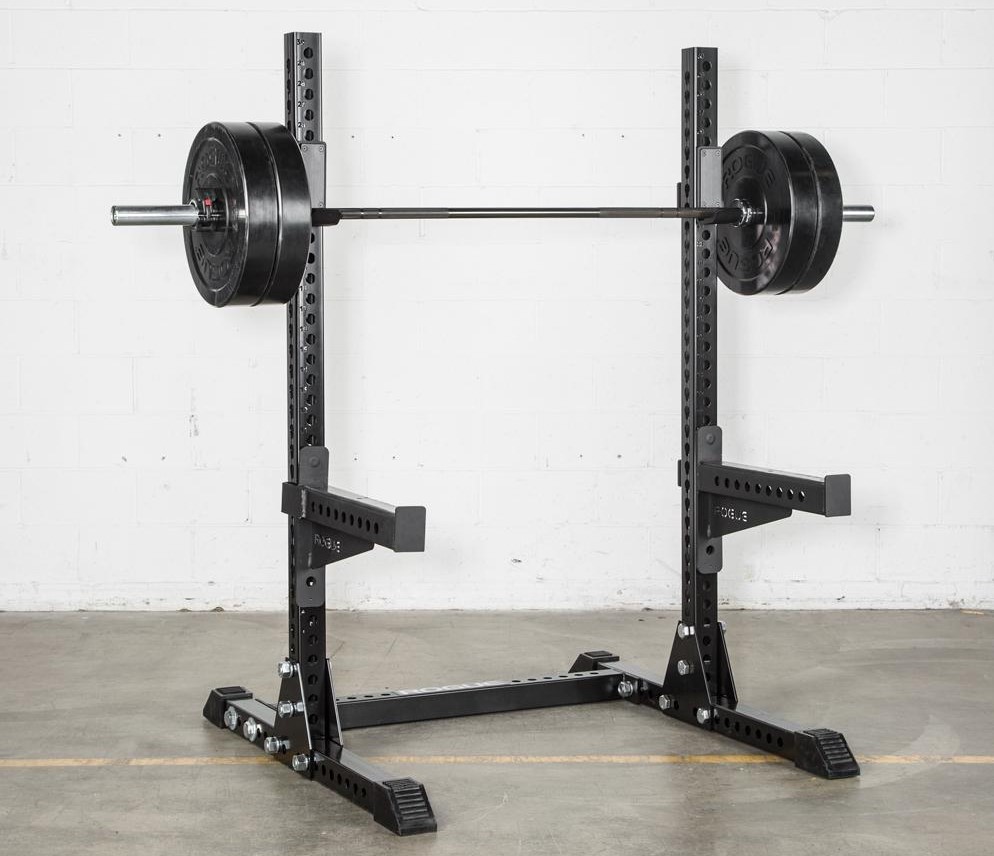
Getting Fooled By “Rubber Foam” Flooring
I don’t know how some places get away with advertising it as “rubber foam”. None of the foam stuff is rubber.
The true name for this lightweight cheap flooring is EVA (ethylene vinyl acetate) an open cell foam used in many sports applications and even in padding on weight benches and weight machine seats. I’ve got some EVA foam that I use on my truck roof for my hang glider. It’s good stuff in the right application, where it is not being compressed all day long under hundreds of pounds. It has a certain stiffness to it and works well for the right things.
Gym floors are not the right application.
I’ve used the stuff in my home gym. Here’s what happens:
- It doesn’t absorb (accidentally?) dropped weights very well, leading to damage to your weights or floor underneath.
- Pieces will stretch from lateral force and move out of alignment, creating gaps.
- The surface diamond-pattern texture wears away quickly, creating a slick smooth surface.
- Heavy equipment will cause it to compress a lot and leave marks permanently.
- Your footing will not be firm for any standing heavy lifts. Squats, deadlifts and cleans, beware!
- Racks and machines will not be as stable as on rubber flooring.
Convinced yet? I hope so.
Get rubber flooring instead, at least 3/8″ thick, depending on the environment. I have more advice in the gym flooring article.
